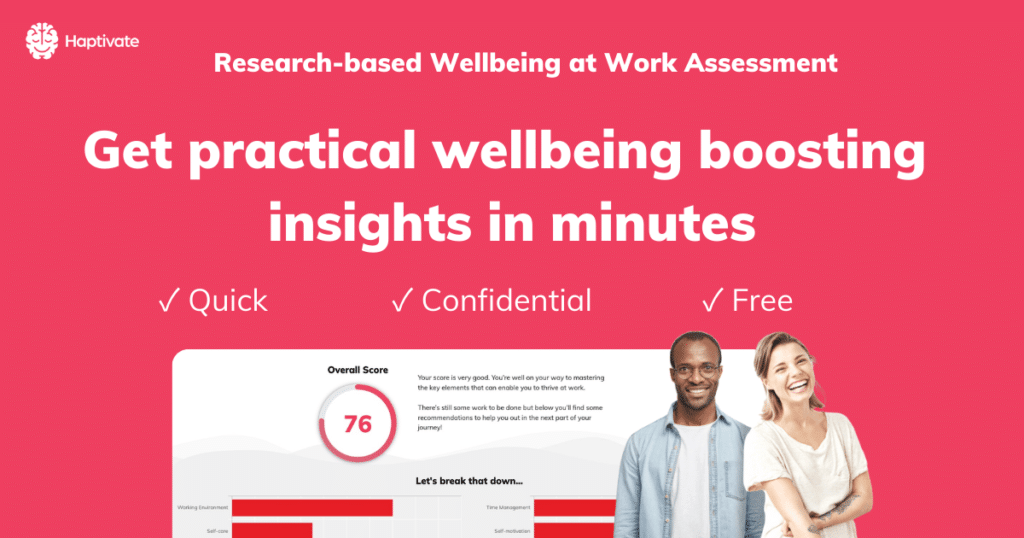1. Establish Open Lines of Communication
This sounds simple, yet a lot of teams we work with struggle with this. Poor communication can erode trust, lower employee morale, and lead to significant productivity losses.
Warning signs of poor communication might include:
Frequent Misunderstandings
Working in Isolation
Lack of Engagement and Recognition
Communication Red Flags
Negative Communication Patterns
Research shows that poor communication results in a 49% drop in productivity and a 50% reduction in job satisfaction, with 42% of employees experiencing increased stress.2
When team members don’t feel heard or understood, it creates a disconnect that impacts their trust in leadership and their engagement at work.
This is not just about avoiding misunderstandings – it’s about fostering a culture where everyone feels valued and part of the team’s success.
How to Take Action:
Start building stronger connections today! Schedule a 1:1 meeting with each team member this month to foster open communication and trust. Don’t wait – open up your calendar right now whilst you’re thinking about it and take the first step toward a more engaged and motivated team now!
It gives you the chance to dedicate time to address individual concerns, provide personalised feedback, and understand each team member’s unique challenges and aspirations. The research backs this as well, showing that employees who have regular, meaningful interactions with their managers are more engaged and satisfied with their jobs.3
Here are some probing questions to encourage open and honest communication. You won’t want to ask them all, just pick out a few that feel relevant based on the conversations you’re having…

Reflective Questions:
“What’s one recent success you’re proud of that we haven’t yet celebrated?”
“Can you share a challenge you faced recently and how you approached solving it?”
Future-Oriented Questions:
“What are your top three goals for the next quarter, and how can we support you in achieving them?”
“Is there a skill or area you’d like to develop further in the coming months?”
Feedback and Improvement Questions:
“What’s one thing you think we could improve as a team?”
“Can you provide an example of a process that you feel isn’t working well and how we might fix it?”
Personal Insight Questions:
“What motivates you most in your role here?”
“Is there anything outside of work that’s currently inspiring you or influencing your work?”
Team Dynamics Questions:
“How do you feel about the current level of communication within our team?”
“What’s one thing we could do to foster better teamwork and collaboration?”
Support and Resources Questions:
“Do you feel you have the resources and support you need to do your job effectively?”
“What additional tools or resources would help you be more successful in your role?”
Work-Life Balance Questions:
“How are you managing your work-life balance? Is there anything we can do to help you maintain it?”
“Are there any adjustments or support systems we could implement to help you balance your responsibilities better?”
Wellbeing and Personal Development Questions:
“How are you feeling about your personal and professional growth here?”
“Is there anything we could do to better support your wellbeing?”
Company Culture Questions
“How would you describe the overall work environment here?”
“Is there anything you think our leaders could do differently to support the team better?”
Other ways to improve communication:
Leverage tools like Slack or Microsoft Teams to keep communication channels open and accessible. These platforms can help maintain transparency and ensure everyone is in the loop.
Invest in communication training for your team. This can include positive communication workshops on active listening, non-verbal communication, and giving constructive feedback.
2. Carry Out An Employee Wellbeing Assessment
Research shows that employee wellbeing and morale go hand-in-hand – when wellbeing is high, morale and productivity follow suit. But you can’t improve what you don’t measure. One of the easiest and most effective ways to start is with an employee wellbeing assessment
Understanding your team’s wellbeing isn’t just about knowing who’s feeling a bit down. It’s about getting to the root of issues that impact productivity and engagement.

How to Take Action:
We’ve developed a completely FREE employee wellbeing assessment tool for both individuals and teams.
Our standard assessment is 100% free for anyone to use because support for wellbeing should be accessible to all – not just those who can afford it. And just because it’s free doesn’t mean we’ve cut any corners.
This tool is backed by years of expertise and experience, delivering personalised scores, insights, and practical steps to support real, meaningful change
Complete our free Employee Wellbeing Assessment.
Here’s how you can kickstart this:
Take the assessment: it’s quick and easy. In just 10-15 minutes, you and your team will complete a series of questions designed to gauge overall wellbeing and resilience.
Review the reports: each participant gets a detailed, personalised report with actionable insights. These aren’t generic tips; they’re tailored to your specific needs.
Implement insights: use the data to create a strategy that addresses the unique challenges your team faces.
3. Organise Fun and Engaging Team Building Exercises
Let’s face it, “team building” can often conjure images of cringe-worthy trust falls or awkward icebreakers. But done right, team building is a game-changer for employee morale and productivity.
It’s not just about having fun – it’s about fostering deeper connections and improving team dynamics.
Research shows that effective team-building activities can significantly enhance team cohesion, communication, and overall performance.4
One study found that team-building activities designed to improve social cohesion (like casual meetups) and task cohesion (like goal-setting exercises) both play crucial roles in team effectiveness.5

How to Take Action:
Our FREE Micro-Team Building App is a perfect way to kick off your meetings – especially if your team could use an engagement boost.
With the Haptivate Team-Building App, you’ll get a year’s worth of quick, easy team-building activities to use regularly. It’s ideal if you’re looking for something consistent and effective, rather than a one-off event where the feel-good factor fades fast.
Need a hand breaking the ice with your team?
Get free access to the Haptivate Team-Building App
Join the Haptivate newsletter for free access to the App and all our wellbeing at work resources.
Explore 52 different ice-breakers, activities and challenges to help make wellbeing part of the conversation at your organisation.
Along with the App you also get access to other free team-building resources such as; managing stress as a team, focusing on strengths, and goal setting.
By incorporating engaging and meaningful team-building activities into your routine, you’ll not only break the monotony but also build a stronger, more connected team.
4. Encourage Team Bonding Outside of Work
Work can sometimes feel like a grind, and even the best in-office team-building exercises might not be enough to foster deep connections. That’s why it’s essential to organise some opportunities for team bonding outside the office – and ideally, on company time.
Getting the team together in a relaxed, non-work environment can help build genuine connections and improve overall morale. This isn’t just about having fun. It’s about strengthening team cohesion and trust, which can make a huge difference in how your team functions day-to-day.
While social events and parties are great, it’s important to avoid putting pressure on employees to spend extra hours outside of work for “face time.” By organising social activities during work hours, you give everyone the chance to connect in a way that feels supportive, not obligatory.
When team members feel personally connected, they’re more likely to communicate openly, collaborate effectively, and support each other when challenges arise – leading to a happier, more productive team overall.6

How to Take Action:
Organise volunteer opportunities
This is a fantastic way to foster team spirit and give back to the community. Start by polling your team to find out which types of volunteering activities resonate most with them. Once you have a sense of their interests, reach out to local charities to offer your team’s services for a few hours.
This could involve walking dogs at a local rescue, answering phones at a befriending service, or planting vegetables at a community allotment. These activities not only benefit the community but also strengthen team bonds and boost employee morale.
Create a social calendar:
Use a shared calendar to schedule your volunteer days and any other social events to ensure everyone is informed and can participate. You can also download our FREE wellbeing calendar (we update it annually) which is full of awareness days you might want to celebrate.
Download All These Wellbeing Dates to Your Calendar Now!

Join the Haptivate newsletter to import these wellbeing dates to your calendar and get access all 30+ free wellbeing at work resources.
5. Promote Work-Life Balance
Work-life balance isn’t just some fantasy buzzword, it’s a fundamental aspect of a healthy workplace.
Studies have shown that employees with a good work-life balance are more engaged, more productive, and have higher job satisfaction.7
But what does “good” actually look like?
Research suggests that the threshold for gaining these benefits includes having clear boundaries between work and personal time, reasonable workloads, and enough flexibility to manage both work and life commitments effectively.8
In practice, this often means ensuring employees have enough time to recharge outside of work – typically, working no more than 40–45 hours per week and having the ability to fully disconnect outside of those hours.
Conversely, poor work-life balance can lead to stress, burnout, and higher turnover rates.9 By promoting a balance, you’re investing in your team’s long-term health and productivity.

How to Take Action:
Encourage breaks and vacation time.
If you’ve got team members who struggle to take time off, draft a team email reminding them of this policy and the benefits of taking time off:
Subject: Take That Well-Deserved Break!
Hi Team,
Just a friendly reminder to make the most of your holiday days and regular breaks. Taking time to recharge is crucial for maintaining our wellbeing. Let’s ensure we’re all taking care of ourselves.
Regards,
[Your Name]
Nurturing Balance
If you have hybrid or remote employees, balance can be even more difficult to achieve as your home is literally your workplace.
Have a read of our article on “Work from Home Wellbeing Ideas“ for lots of actionable tips to achieve balance.
5. Design Meaningful Recognition and Reward Systems
It’s not just about the money – people want to feel seen and appreciated for their efforts.10
Employee appreciation and recognition is a powerful motivator. Studies show that meaningful recognition can lead to increased engagement, productivity, and retention.11 When employees feel valued, they’re more likely to be satisfied with their jobs and committed to their company.
And recognition doesn’t have to cost the company a fortune! Often, a sincere thank you or a small gesture can go a long way.

How to Take Action:
Implement a shout-out board. Set up a physical or virtual board (you can create one in MS Teams) where team members can post notes of appreciation for one another. This also encourages peer-to-peer recognition and creates a visual reminder of the positive contributions within the team.
Consider simple, cost-free rewards such as leaving work early, or a shoutout in the company newsletter. These small touches can also be highly motivating.
Tailor recognition to individual preferences. Some people love public recognition, while others might prefer a quiet thank you. Get to know your team and personalise your approach using our FREE Showing Appreciation Resource.
6. Lead by Example
Leading by example is crucial because employees often emulate the behaviour of their managers. Leaders who demonstrate integrity, positivity, and resilience foster similar traits in their team members.12 (Shameless plug: this is why we see such great results from our Manager Wellbeing Training!)
How to Take Action:
Model the behaviours you want to see: whether it’s punctuality, positivity, or openness to feedback, make sure you’re practising what you preach.
Encourage professional growth: show your commitment to your team’s development by participating in training and development activities yourself. This demonstrates that learning is a continuous journey for everyone, regardless of their position.
7. Offer Professional Growth Opportunities
Helping your team grow professionally isn’t just good for their careers, it’s great for your business. When employees see that their company is invested in their development, they’re more engaged, motivated, and likely to stick around.
According to studies, employees who have access to training and development are more productive, engaged, and loyal to their employers.13 Not just that but, continuous learning also helps keep your team’s skills relevant and sharp, which is crucial in today’s business world.

How to Take Action:
Show genuine interest in your employees’ career paths. Help them set realistic goals and provide the resources they need to achieve them. To support this, download our FREE “Coaching Session: Setting Goals” guide, which offers practical tips and templates to make your one-on-one meetings more effective.
Provide access to employee development programs. Consider surveying your team to identify the areas where they’d like to grow or the skills they wish to develop. Use these insights to select development programs that will be most beneficial.
Promote from within by encouraging employees to take on new roles or responsibilities. During performance reviews, discuss career goals and possible new projects or roles that align with their aspirations.
Final Thoughts
Boosting team morale doesn’t have to be complex. With some deliberate effort and perseverance, you can create a more positive, engaged, and productive workplace. But this takes time and there are no quick fixes.
A sensible first step is making an effort to really understand what’s really going on in your team. That’s where our free Employee Wellbeing Assessment comes in. It’s quick and offers personalised insights and a wealth of resources to help you pinpoint and address the specific needs of your team.
Boosting Team Morale FAQ
What are the Benefits of High Team Morale?
Increased employee loyalty and engagement
Higher productivity and quality of work
Lower turnover rates and absenteeism
What are the Consequences of Low Team Morale?
Decreased motivation and job satisfaction
Higher levels of stress and burnout
Negative impact on customer service and client relationships
What are the Signs of Low Employee Morale?
Increased complaints and negativity
Lack of enthusiasm and engagement
Higher rates of absenteeism and turnover
How can I Acknowledge and Address Low Employee Morale?
Company culture
Be transparent and honest about the situation
Provide a safe space for employees to express their concerns and emotions
Communicate a clear plan of action to address the problem
What is the Quickest Way to Boost Employee Morale?
The quickest way to boost employee morale is to understand and address your team’s current wellbeing and needs directly. One effective approach is to use our free Employee Wellbeing Assessment. This assessment takes just 10-15 minutes to complete and provides you with personalised reports and actionable insights tailored to your team’s specific challenges.
What Does Positive Employee Morale Look Like?
Positive employee morale is reflected in a work environment where employees are engaged, motivated, and committed. Key indicators include:
High engagement: employees are enthusiastic about their work, actively participating and contributing ideas.
Low turnover: employees are more likely to stay with the company, feeling valued and seeing growth opportunities.
Strong collaboration: employees support each other, sharing knowledge and working together effectively.
Open communication: employees feel comfortable sharing thoughts and feedback, fostering transparency.
Resilience: employees handle challenges well, maintaining a positive outlook and adaptability.
Positive relationships: employees have strong, respectful relationships with colleagues and managers.
References
- https://www.gallup.com/workplace/285674/improve-employee-engagement-workplace.aspx
- https://www.forbes.com/advisor/business/digital-communication-workplace/#:~:text=Poor%20communication%20is%20affecting%20trust,impacts%20trust%20in%20the%20team
- https://www.peoplemanagement.co.uk/article/1806097/employees-three-times-engaged-when-feel-supported-managers-study-shows
- https://www.mmanc.org/wp-content/uploads/2022/09/Teambuilding_Article_IJME.pdf
- https://www.frontiersin.org/journals/psychology/articles/10.3389/fpsyg.2023.1065323/full
- https://www.bupaglobal.com/en/your-wellbeing/healthy-mind/importance-of-social-interaction-at-work-and-beyond
- https://www.frontiersin.org/journals/psychology/articles/10.3389/fpsyg.2022.906876/full
- https://pmc.ncbi.nlm.nih.gov/articles/PMC7037206/
- https://www.ncbi.nlm.nih.gov/pmc/articles/PMC7037206/
- https://www.workplacestrategiesformentalhealth.com/resources/evidence-based-actions-for-recognition-and-reward
- https://www.quantumworkplace.com/employee-engagement-trends-report/performance-and-impact
- https://www.ncbi.nlm.nih.gov/pmc/articles/PMC9298667/#:~:text=Research%20has%20shown%20that%20followers,the%20work%20of%20team%20members
- https://ibtjbs.ilmauniversity.edu.pk/journal/jbs/14.2/12.pdf






